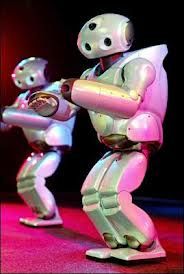 | « Back to article | Print this article |
 Researchers have developed a robotic snail that can climb walls and stick to overhead surfaces much like its living counterpart.
Researchers have developed a robotic snail that can climb walls and stick to overhead surfaces much like its living counterpart.
The robot can have potential uses in invasive surgery and oil well drilling, among other applications, scientists say.
Anette Hosoi, professor of mechanical engineering at the Massachusetts Institute of Technology has been studying snails.
Snails can move in any direction -- horizontally, vertically, and upside down—on various surfaces, be it sand, shells, tree barks or slick walls and smooth glass.
One of the reasons for this is the sticky substance on their underbellies, which acts as a powerful lubricant and reduces friction during movement.
Hosoi's group has been able to create the RoboSnail by studying and adapting the biological properties of the snail to robotic devices.
Hosoi has also developed 'RoboClam' inspired by razor clam, an organism that has the amazing ability to dig and wedge itself and can burrow up to 30 inches in the sand.
RoboClam was developed with the intention of understanding the organism's behaviour and mechanics as well as to explore the possibility of automated digging devices that use less energy than current technology and equipment.
The researchers found that while digging, the clam's up-and-down movement accompanied by opening and closing of its shell turns sand into the consistency of liquid quicksand.
This in turn allows the clam to move quickly through the sand.
Similar to the human version, the RoboClam vibrates, changing the solid seabed into fluid, allowing a worm-like foot to push down.
Clam-inspired robotic diggers could find use as automatic tethers and lightweight low-cost anchoring devices for small robotic submarines and even large ships and oil platforms.
Devices that burrow into the seabed could also potentially be used as detonators for underwater mines.
Hosoi presented her research at the 2013 Society for Industrial and Applied Mathematics Annual Meeting in San Diego, US.
Hosoi is not alone in looking to biology to instruct robotics development.
Engineers around the world are turning to natural organisms like insects, fish and turtles to inspire the design of robots capable of performing specific tasks that automated devices have traditionally been unable to achieve.
Mimicking natural organisms can also aid in improving the efficiency of many applications that are energetically expensive, since biological entities perform the same tasks with much higher efficiency.
The image is used for representational purpose only